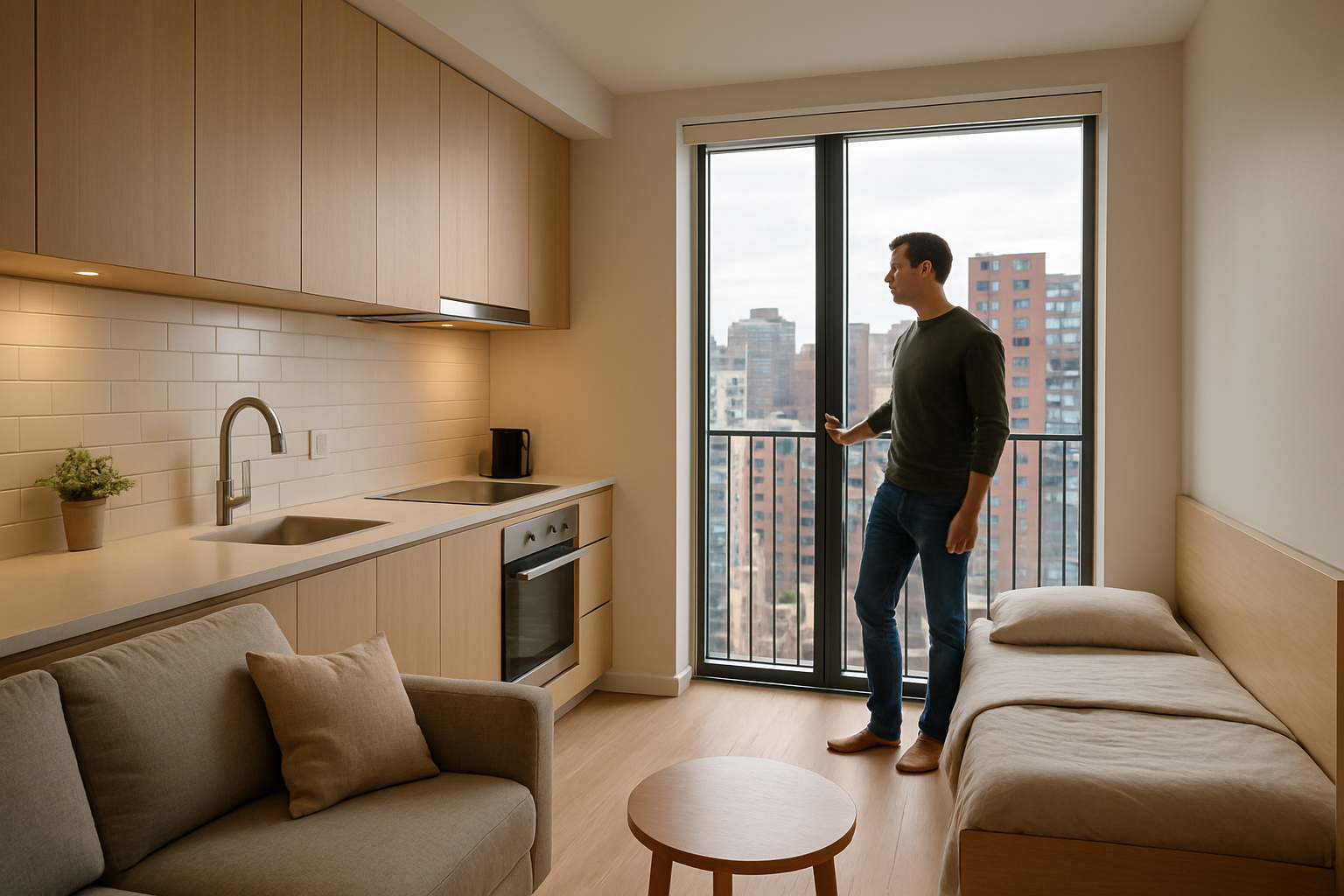How Studio Apartment Trends Are Evolving in 2025
Studio apartments have undergone a remarkable transformation in recent years, evolving from simple, compact living spaces into sophisticated micro-environments designed for maximum efficiency and comfort. As we move through 2025, these living spaces are experiencing another wave of innovation driven by changing demographics, technological advancements, and shifting priorities in urban living. The studio apartment market is responding with creative solutions that address the needs of today's city dwellers while anticipating the demands of tomorrow.

Key Factors to Weigh Before Renting a Studio
The decision to rent a studio apartment in 2025 involves considerations that weren’t on most renters’ radars just a few years ago. Space optimization has reached new heights with transformable furniture becoming the norm rather than a luxury. Multi-functional pieces that convert from workstations to dining areas to beds with minimal effort allow residents to effectively triple their usable space throughout the day.
Smart home integration has become a critical factor for studio renters. The most desirable units now feature built-in systems that adjust lighting, temperature, and even furniture configurations based on time of day and usage patterns. Voice-activated controls have evolved to understand context, anticipating needs before they’re verbalized. When evaluating a potential studio rental, the technological infrastructure has become as important as square footage.
Community amenities have also shifted from nice-to-have perks to essential extensions of the living space. Buildings are increasingly offering bookable private dining rooms, co-working spaces with professional-grade equipment, and even recording studios that residents can reserve when needed. These shared resources effectively expand the functional footprint of individual units while fostering community connections.
Why Studio Spaces May Appeal to More Buyers This Year
The profile of studio apartment buyers has expanded significantly in 2025. While young professionals continue to represent a core demographic, there’s been notable growth in other groups. Empty nesters looking to downsize without sacrificing location are increasingly turning to high-end studios in vibrant neighborhoods. The traditional retirement trajectory of moving to quieter suburban areas is being challenged by older adults seeking to maintain access to cultural attractions and healthcare facilities.
Remote work flexibility has permanently altered housing preferences, with many professionals now splitting their time between multiple locations. Studios serve as ideal urban bases for the growing segment of “part-time city dwellers” who divide their time between metropolitan hubs and more spacious homes in less dense areas. Developers are responding with services tailored to these intermittent residents, including concierge options that maintain apartments during absences.
Investment appeal has grown as studios demonstrate resilience in fluctuating markets. Their lower entry price point combined with consistent rental demand makes them attractive to first-time real estate investors. Purpose-built rental studios designed specifically for the short-term market have emerged as a distinct asset class, often featuring more hotel-like amenities and services than traditional apartments.
Urban Living: What to Expect in 2025
Urban density solutions are transforming the studio apartment landscape in major cities. Vertical communities have evolved beyond simple high-rises to become integrated ecosystems with strategic placement of common areas that encourage interaction across floors. Some developments now incorporate “vertical neighborhoods” where every fifth floor features shared spaces designed for specific activities, from gardening to fitness to creative pursuits.
Sustainability has moved from marketing buzzword to fundamental design principle. The most progressive studio developments incorporate systems for water reclamation, modular construction methods that minimize waste, and materials selected for their minimal environmental impact. Energy self-sufficiency through solar integration and advanced insulation has become a selling point that commands premium prices in the market.
Wellness features have become standard in new studio developments. Air filtration systems, circadian lighting that adjusts throughout the day, and materials chosen for their health properties are now expected rather than exceptional. Some luxury developments have incorporated technology that monitors air quality, noise levels, and even resident sleep patterns, offering suggestions for environmental adjustments to improve wellbeing.
Cost Considerations for Studio Living in 2025
The pricing structure for studio apartments has become increasingly nuanced, with location remaining the dominant factor but technological integration creating significant price variations within neighborhoods. Studios featuring full smart home capabilities typically command a 15-25% premium over comparable units with basic features. Buildings with comprehensive amenity packages add another 10-20% to monthly costs but often result in smaller units as developers allocate more space to shared facilities.
| City | Average Studio Size | Average Monthly Rent | Premium for Smart Features | Typical Purchase Price |
|---|---|---|---|---|
| New York | 450 sq ft | $3,200 | +25% | $580,000 |
| Chicago | 500 sq ft | $1,950 | +18% | $320,000 |
| Austin | 525 sq ft | $1,800 | +15% | $295,000 |
| Seattle | 475 sq ft | $2,100 | +22% | $425,000 |
| Miami | 525 sq ft | $2,400 | +20% | $375,000 |
Prices, rates, or cost estimates mentioned in this article are based on the latest available information but may change over time. Independent research is advised before making financial decisions.
The Future of Studio Design
Looking ahead, studio apartments will likely continue their evolution toward increasingly personalized environments. Modular construction techniques are enabling more customization options at the pre-construction phase, allowing buyers to select layouts that prioritize their specific needs. The line between custom-built and mass-produced housing is blurring as developers offer greater flexibility in finishes and configurations without significant cost increases.
The studio apartment has transcended its former identity as merely an entry-level housing option. In 2025, these spaces represent a sophisticated response to contemporary urban living challenges, offering efficiency without sacrifice, community without invasion of privacy, and sustainability without compromise on comfort. As cities continue to densify and technology advances further, the studio format is positioned to remain at the forefront of housing innovation.




